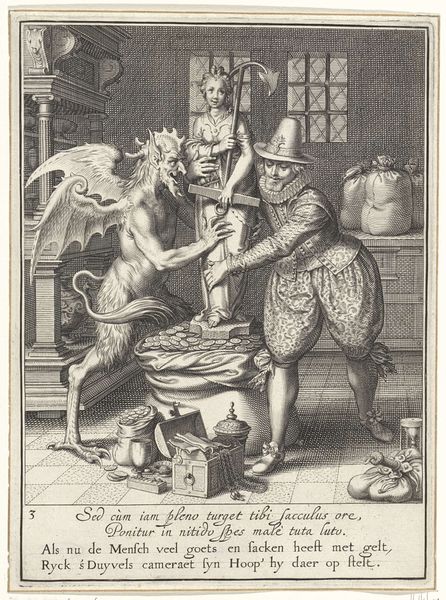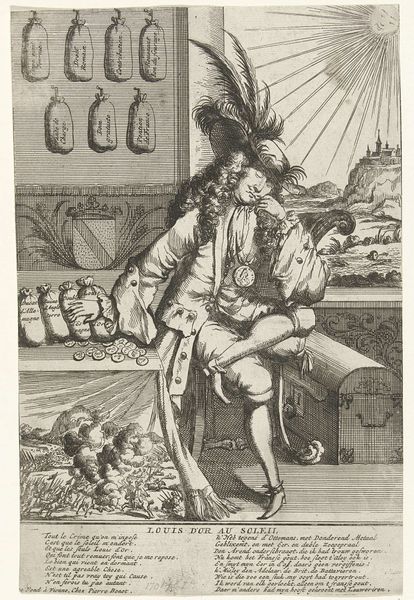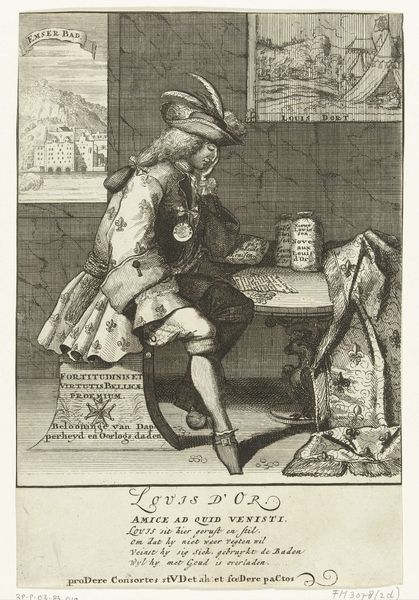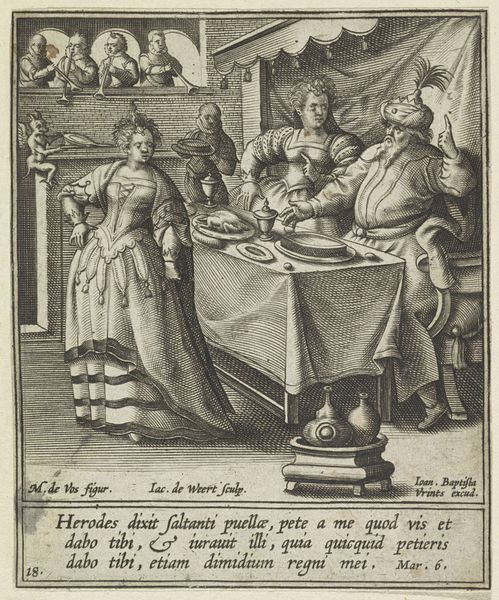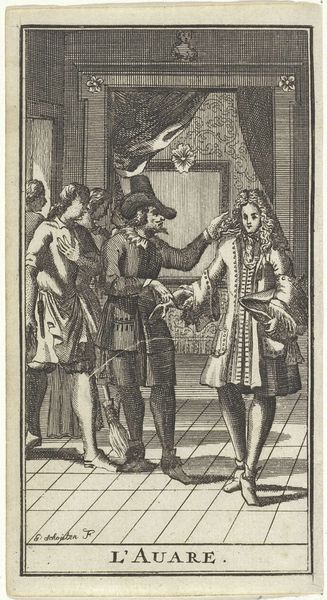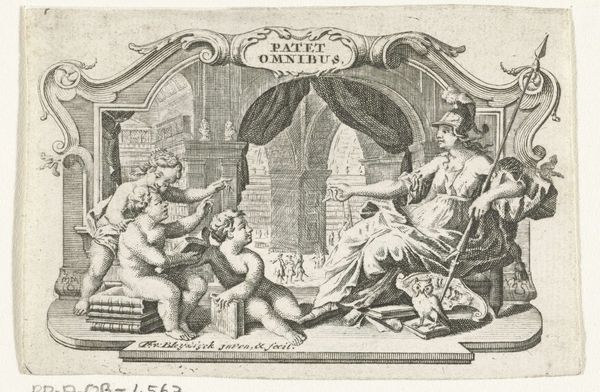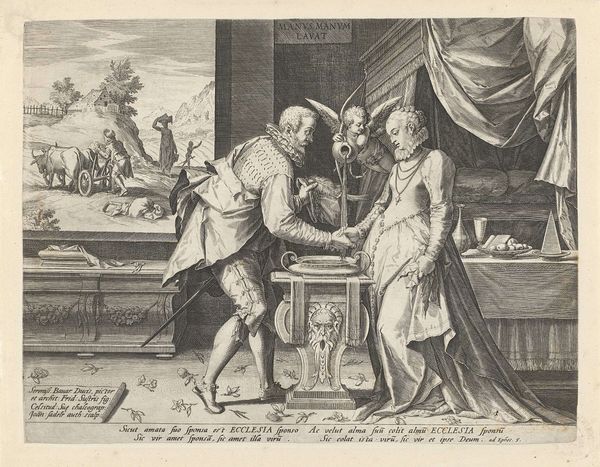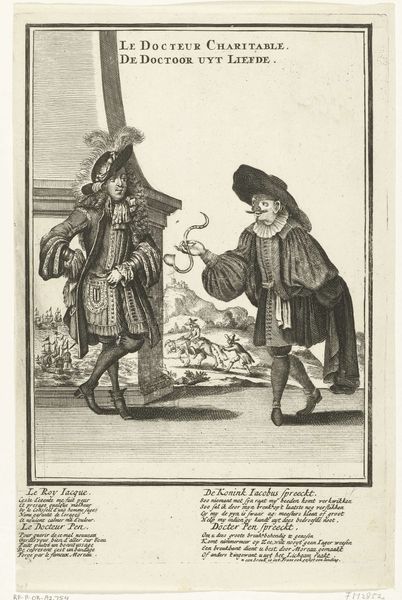
drawing, print, engraving
#
drawing
# print
#
pen illustration
#
old engraving style
#
line
#
pen work
#
history-painting
#
engraving
Dimensions: height 257 mm, width 172 mm
Copyright: Rijks Museum: Open Domain
Curator: I'd like to direct our attention to this striking engraving from the Rijksmuseum collection entitled "Harlekijn bij Lodewijk Willem van Baden-Baden, 1705". It's an interesting historical print, dating from 1705 to 1706. Editor: My first impression is a sense of intricate chaos! The stark lines of the engraving, the sheer volume of detail... It feels deliberately overwhelming, almost unsettling in its abundance. Curator: Precisely. This print engages with the political landscape of the time. What strikes me is how it uses popular imagery to comment on socio-political circumstances and Louis XIV, Prince of France. We see allegorical representations, a commentary on power and resources that goes beyond simple portraiture. The Harlequin figure tests Louis XIV with balance scales. Editor: It's definitely interesting to think about the means of production for something like this. The engraver, someone named Fredrich Goldemet, had to be skilled in line work and pay close attention to the text surrounding the image. We also have to remember that creating multiple prints for circulation involved laborious methods and specific material costs. So, the engraving itself represents considerable expense for its time, for the information that it spreads about Louis XIV. Curator: Absolutely, the very act of disseminating these kinds of images shaped public opinion and participation in cultural and political life. Notice how the central figures occupy different symbolic zones – Louis with symbols of nobility versus Harlequin associated with more public-facing performances. The inscription that reads "Essayeur," combined with his checking and playing around with gold and balance, conveys a political message related to resources and financial responsibility. Editor: I agree! Looking closely at Louis's character and his clothing emphasizes opulence and extravagance. I get the impression of criticizing excess while, right beside, we have someone in more common dress using tools to weigh worth literally! A kind of class contrast meant to challenge and, perhaps, criticize those in positions of authority for exploiting their privileged material conditions and social positions. Curator: Considering everything, the artist sought engagement—prompting thought about image politics, cultural narratives and historical circumstances. It’s this dialogue between public figures that brings depth. Editor: For me, it underlines how objects – particularly works reproduced this way – held value that transcended simple aesthetic pleasures but, also, spoke directly to power dynamics and social critique from a certain economic perspective.
Comments
No comments
Be the first to comment and join the conversation on the ultimate creative platform.
